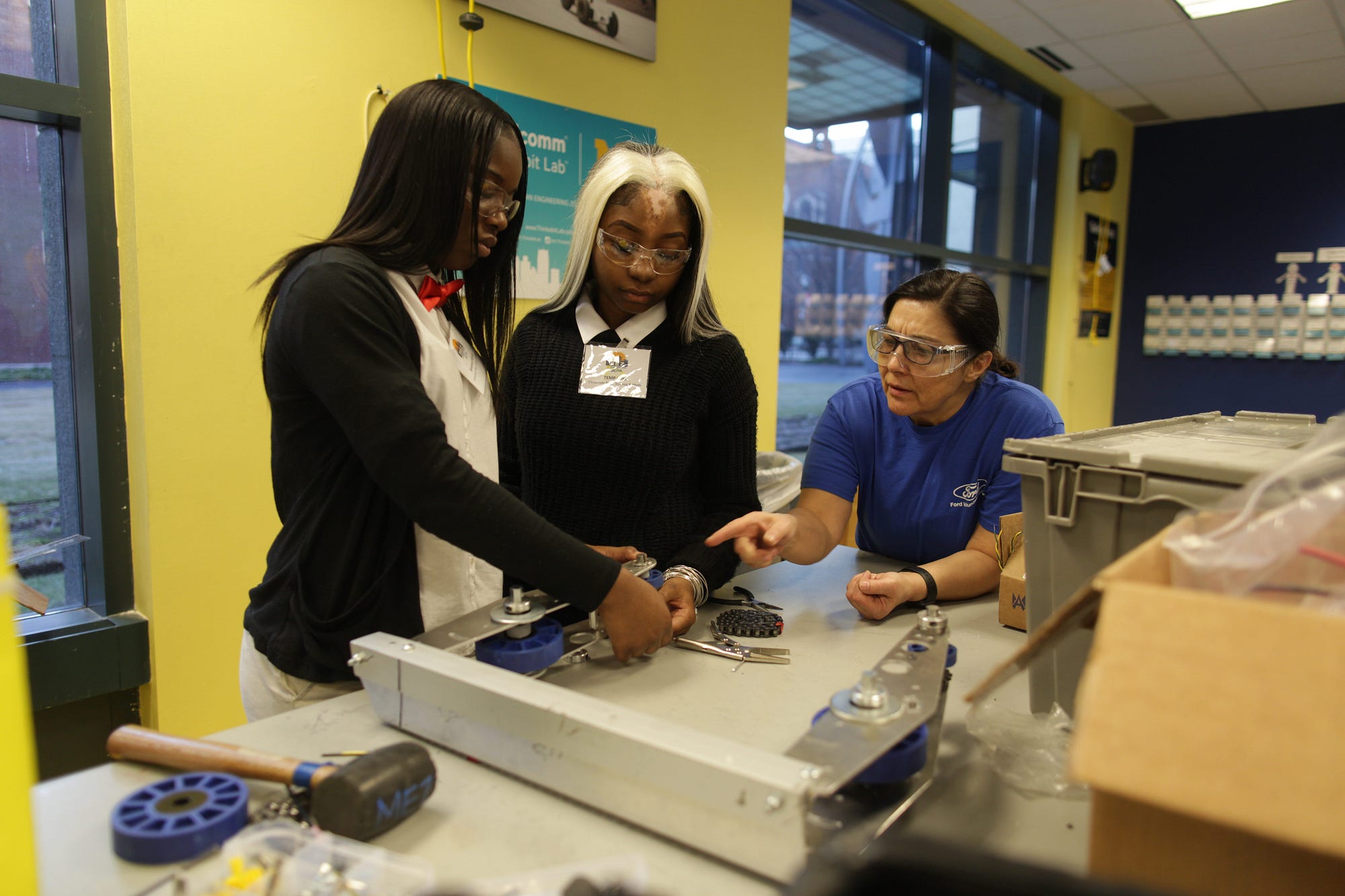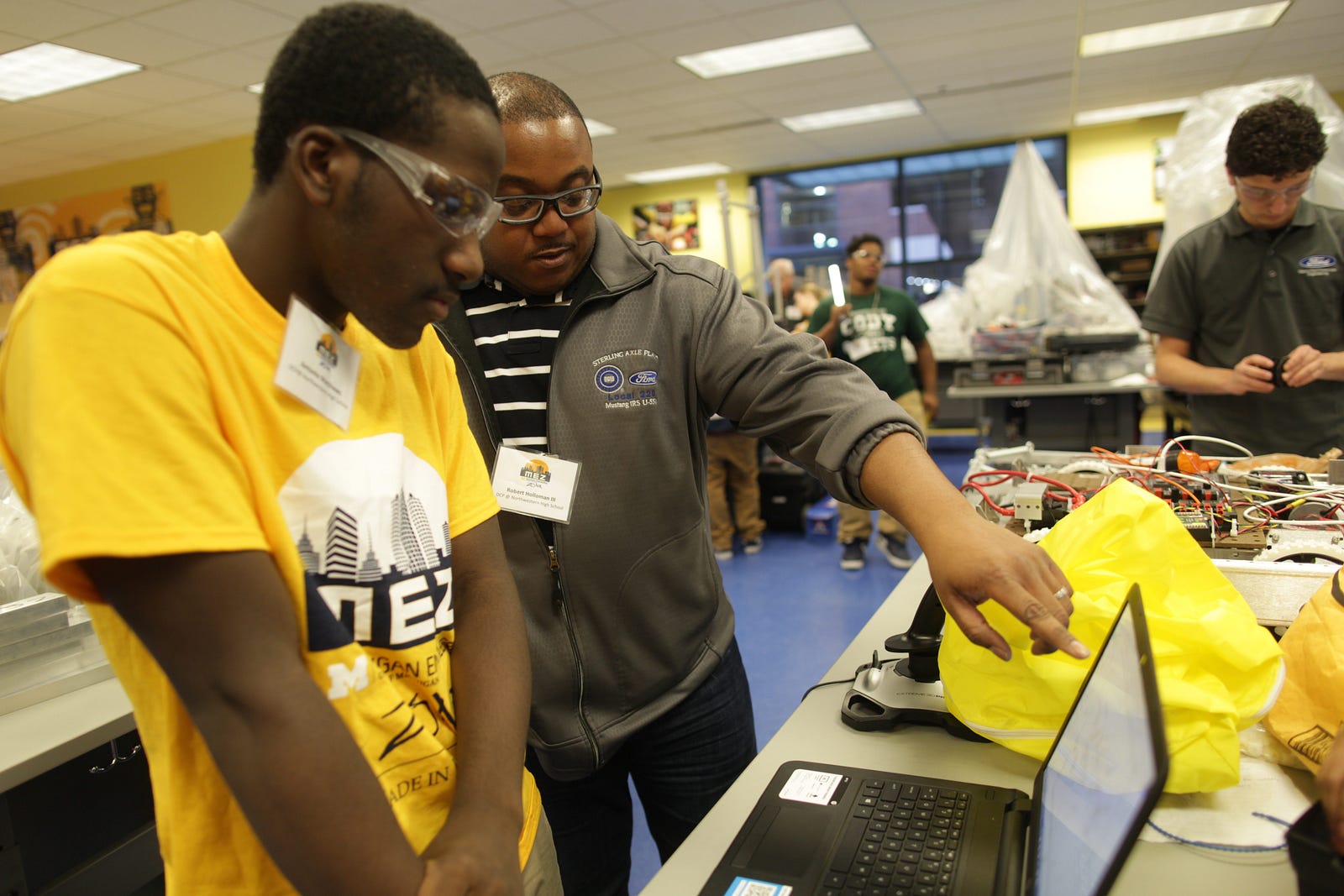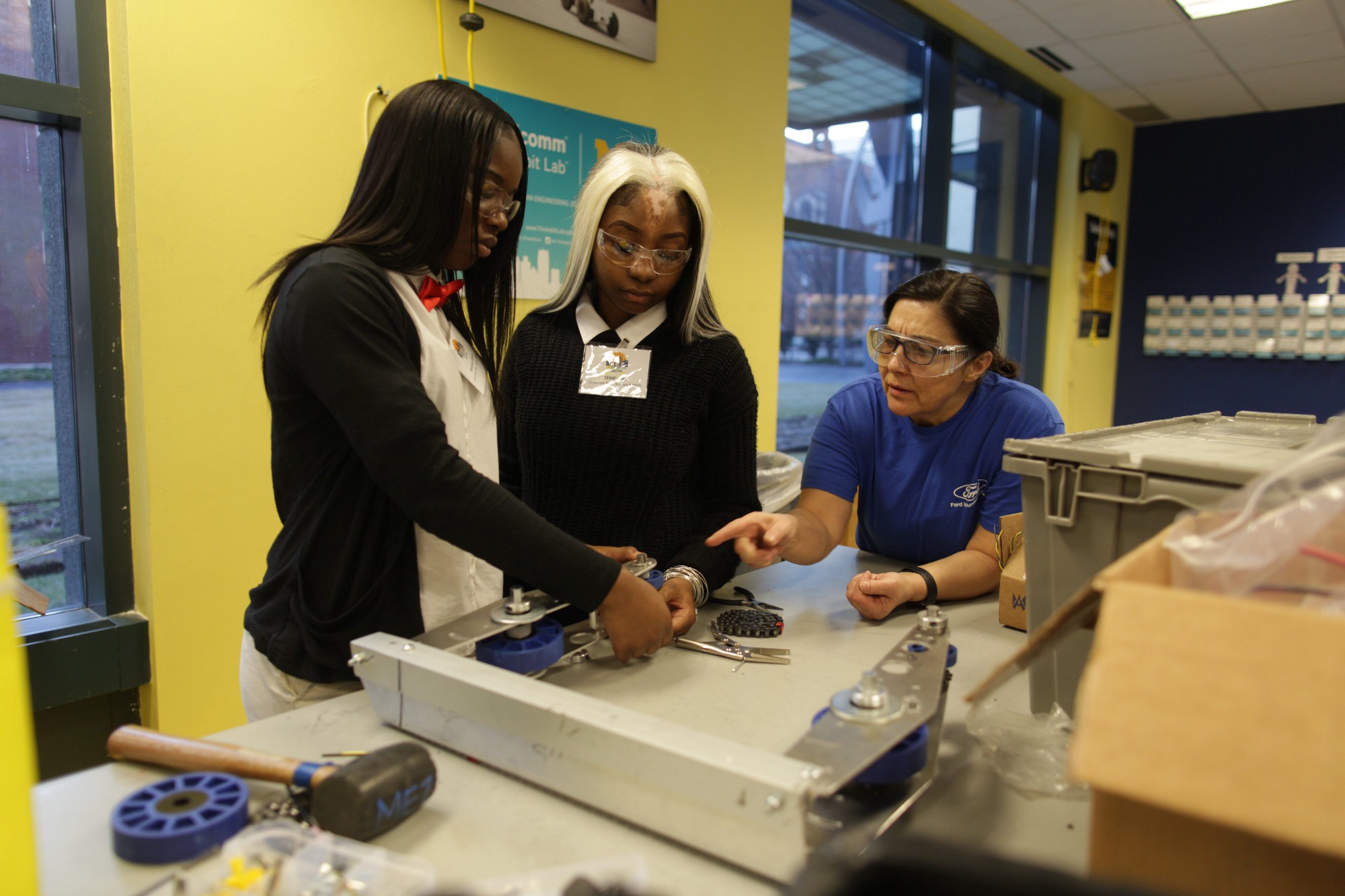Mission Autonomous: Ford Aims to Inspire Next Generation of Engineers with New Award in FIRST Robotics
by Craig Stephens, Chief Engineer, Controls, Ford Research & Advanced Engineering

One thing that still surprises me about mentoring students in the FIRST Robotics Competition is how they seem much older than they really are. When you listen to the students interacting with their mentors, discussing problems in detail and developing solutions, you’d think you were listening to a group of experienced engineers tackling the latest engineering roadblock.
It is remarkable that most of the people in that group are barely 17 years old. It’s motivating to help nurture the next generation of engineers and computer scientists — and to think about what these young men and women will accomplish. One day, likely sooner than we think, they will use their skills to shape advanced technology that we’ll be using on a daily basis.
Today, these students are designing, building and testing a fully functioning robot that can perform a series of complex tasks — ranging from shooting balls into a goal to balancing themselves on a beam. These robots then compete against other robots developed by equally talented young people.
Founded by Dean Kamen in 1989, FIRST teaches students fundamental skills by combining the excitement of sports with science and technology. The competitive tournament and the prospect of building a robot are enticing, but they’re just a gateway for the program’s much loftier goals: Inspiring students to think creatively and generating an interest in the fields of science, technology, engineering and math. At Ford, we’re proud to be part of that effort, with more than 250 members of our team serving as mentors in the program and by sponsoring nearly 80 high school FIRST teams.
This year, we wanted to go even further. So we created a new award that will be presented at the FIRST Championship in Houston and Detroit. Ford’s Autonomous Award celebrates the team whose robot demonstrates consistent, reliable performance during autonomous periods — or the first 15 seconds of each match. I love the fact that students will be recognized for thinking through how a robot moves on its own, knowing that tackling these challenges will help groom them for great careers — perhaps even one at Ford. After all, many of the issues students must tackle to deliver an autonomous robot involve the same types of fundamental problems that our self-driving vehicle team spends its time trying to solve.
Just like a self-driving vehicle, a FIRST team’s robot must make a series of determinations about its environment before it can do anything. Students must ensure their robot can orient itself on the field and understand the nature of its surroundings, including where it has to go. Next, students must program their robot so that it’s able to identify obstacles in its way and figure out how to navigate the field to accomplish its tasks. Then it needs to be able to execute those tasks while avoiding any unforeseen hazards that might pop up.

Judges will be watching closely, but evaluation will be based on all these elements, not necessarily on which robot scores the most points. FIRST students aren’t programming their robots for one instance, either. They participate in multiple matches, so their robot must be able to perform in autonomous mode repeatedly and reliably for success.
In the coming years, jobs related to science, technology, engineering and math are expected to keep growing. Between 2009 and 2015, the number of STEAM jobs grew by more than 10 percent, according to the U.S. Bureau of Labor Statistics. That was more than double the growth for non-STEAM jobs. Going forward, some of the fastest-growing STEAM fields are expected to be in computer science and engineering occupations — both areas in which students can gain valuable experience programming and building a functional robot.
As an engineer, sometimes the hardest part of mentoring a FIRST team is having to sit on your hands and not engineer the robot yourself — you’ve got to let students take the lead. Their success is their own. They may not have degrees in engineering yet, but guiding them along the path they choose and watching what they’re capable of is truly inspiring. I can’t wait to see how they — and their robots — perform this year.
For more information about Ford’s STEAM efforts, click here.
